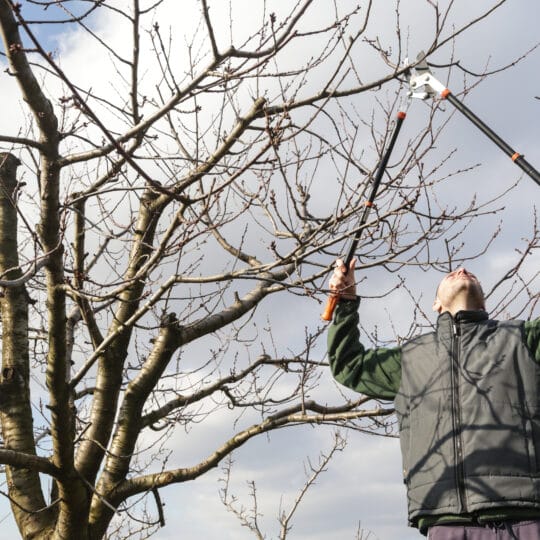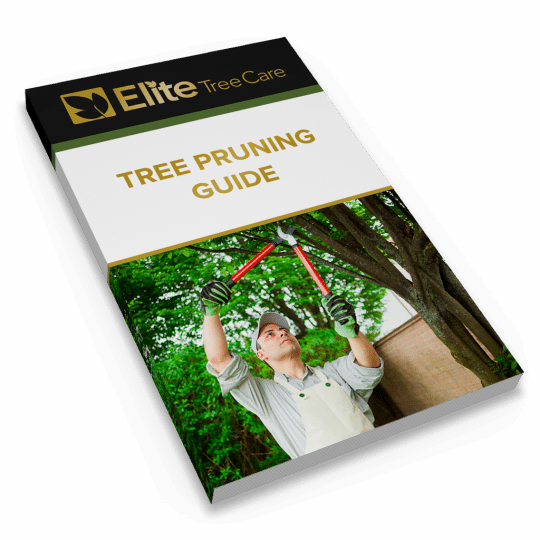Trimming the Tree
Why, How & Who Should Prune
Posted
December 15, 2022

Tis the season for trimming the tree! Now that the leaves are gone, you can easily inspect the branches and take note of any that need to be cut. Learn what to look for, what tools you’ll need, and how to properly plan for pruning trees this season.
Trimming the Tree Starts Now
In addition to not having to deal with leaves, pruning is best left for the dormant season when the tree isn’t actively growing. You also want to remove any dead, diseased, and weaker branches before winter storms weigh them down with snow and ice. This could cause even more damage to the tree and any structure, utility lines, or people in the path of a falling branch.
Tree Trimming Tools
You won’t be needing any lights or ornaments for this type of trimming. Head out to the shed and see if you have these tools for trimming your outdoor trees:
- Pruning shears. For small, thin branches you can reach from the ground, a pair of sharp, handheld shears will do the trick quickly.
- Lopper. This long-handled tool has a short blade for cutting thick branches.
- Folding saw. Even thicker branches may require a sharp saw to make a clean cut. This one also folds for convenient storage.
- Extendable pole saw. For thick branches higher up, extend your reach with this type of saw.
All of these tools should be used with your feet firmly planted on the ground. If you still can’t reach it even with a long or extendable handle, it’s time to call an experienced pro.
What to Cut
When inspecting your trees, here’s what type of branches you should remove:
- Dead
- Broken
- Diseased
- Stubs
- Rubs against another
- Crisscrossed
- Crowded
- Water sprouts
Removing these branches helps to open up the tree’s canopy to allow light and air to circulate. Ultimately, it all helps to make the tree healthier and stronger. Not only will the tree be able to withstand storms in any season, but it will add beauty to your yard for years to come.
How to Cut
When it comes to pruning, there’s a right and wrong way. First, you want to make sure your tools are sharp. A dull blade can tear a branch and create an ideal situation for disease to set in. Making a clean cut to help prevent this from happening.
Any cut you make will encourage new growth. For this reason, it’s best to cut limbs about a quarter inch above a bud that faces out. This is the direction the new bud will grow. The cut should also be on an angle to prevent water from pooling and causing decay.
Thicker limbs require more of a three-cut process to help prevent tearing the bark. You want to help remove the weight from the branch and help ensure the cut heals properly.
- First, cut about halfway through the underside of the branch about a foot out from the joint.
- Next, cut the top about an inch further out from the first cut. Keep cutting under the branch breaks free.
- Lastly, cut the outside of the collar of the branch at an angle without leaving a stub. This helps a callus form to properly heal the cut.
Any larger trimming project should be left for the professionals. This includes anything you can’t reach from the ground or whatever you’re not comfortable pruning. A pro has the tools and experience to make the job safe and efficient. Contact Elite Tree Care for more information about proper tree trimming and to get an estimate for your next project.

Download Your FREE Tree Pruning Guide
Learn how, when, and how much to trim or prune your trees to maximize their health and beauty. This guide covers the factors that go into tree trimming (pruning) and will help you make a more informed decision about hiring a professional tree service.